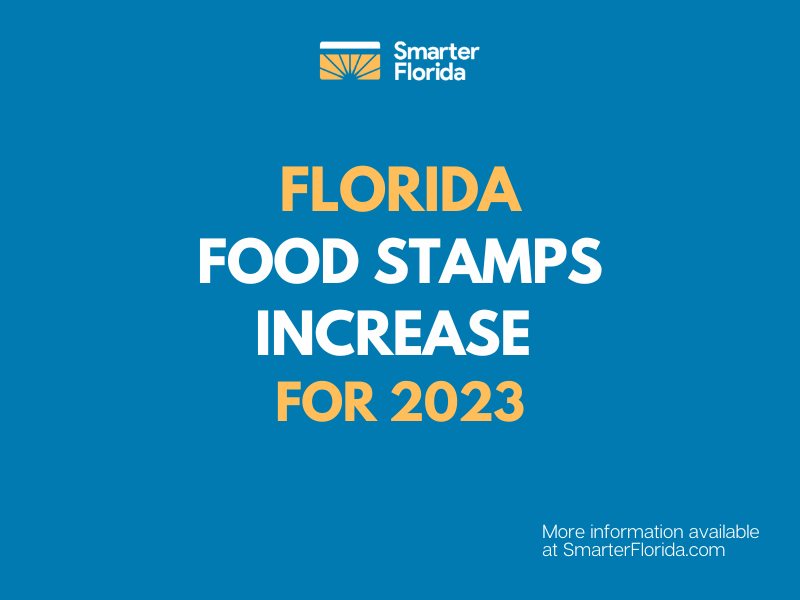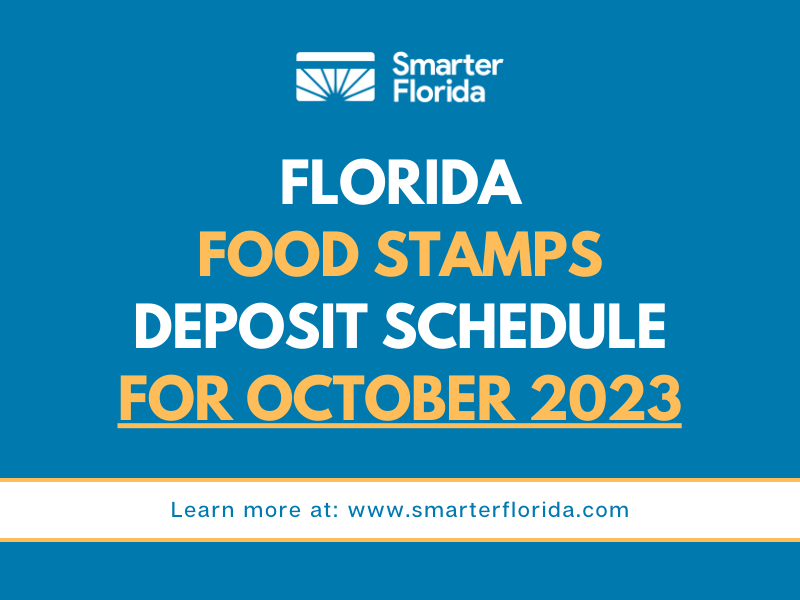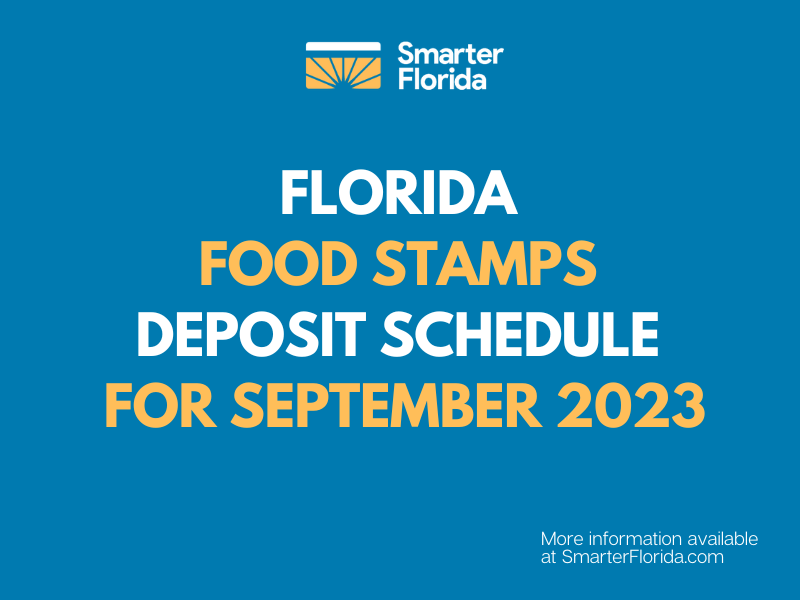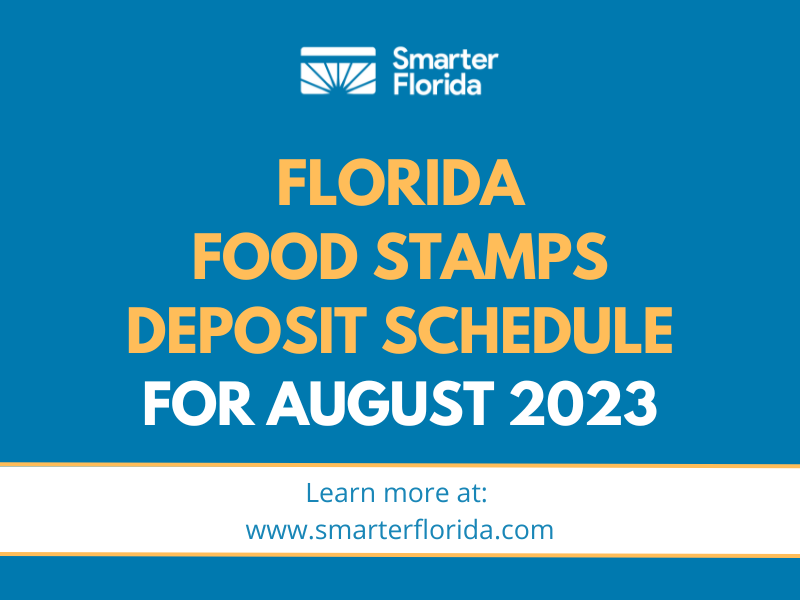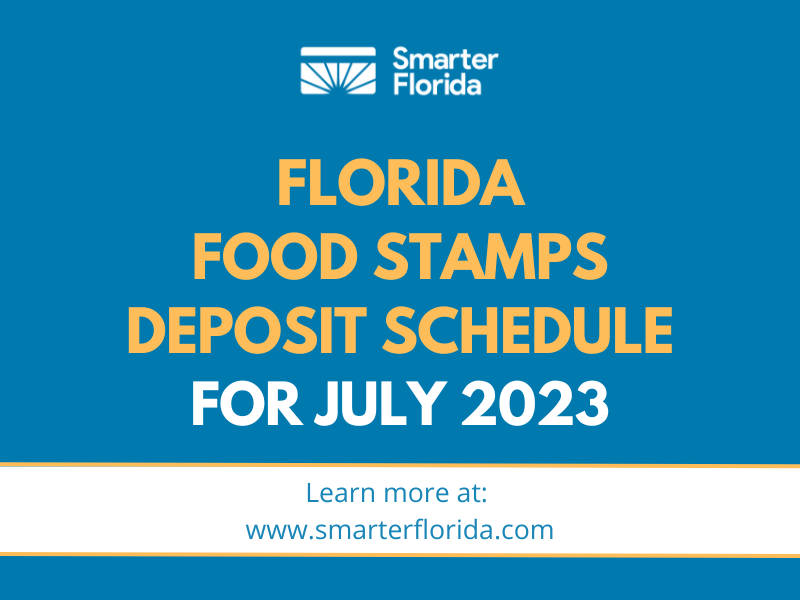It’s a new year and with the continued increase in food prices, one of the questions we have received from Florida SNAP recipients is whether there will be an increase in Florida food stamps benefits. Specifically, will there be a cost of living adjustment to food stamps benefits in 2023 to make up for the increase in food prices? In this post, we will explain in detail what the 2023 Florida Stamps Increase will be, the income limits to qualify for benefits, and how much a family of 4 or 5 will get in SNAP benefits.
Additionally, we will provide a list of other food stamps changes in 2023 that may affect your benefits.
2023 Florida Food Stamps Increase
If you are approved for food stamps in Florida, how much in benefits you get partly depends on the:
- Number of people in your household,
- Total amount of your household’s income, and
- U.S. Department of Agriculture’s (USDA) Thrifty Food Plan.
The Thrifty Food Plan is a government estimate of how much it costs to provide a household with nutritious, low-cost meals.
The table below shows the maximum food stamps benefits for households with zero income.
As your income increases, your Florida SNAP benefit amount goes down.
| Florida SNAP Maximum Benefit Amount by Household Size for Fiscal Year 2023 | |
| Effective October 1, 2022 – September 30, 2023 | |
| Household Size | Maximum SNAP Benefit Allotment |
| 1 | $281 |
| 2 | $516 |
| 3 | $740 |
| 4 | $939 |
| 5 | $1,116 |
| 6 | $1,339 |
| 7 | $1,480 |
| 8 | $1,691 |
| Each Additional Household Member: Add | $211 |
How Much Will a Family of 4 Get in Food Stamps?
Here’s how to calculate how much a family of 4 will get in Florida SNAP benefits.
First, we need to start with the household income.
If you have a countable net income, multiply your net monthly income by 0.3 (30 percent).
Round up this amount to the nearest dollar.
Next, take this amount and subtract it from the maximum benefit level for a household of your size.
From the table above, the maximum a household of 4 could receive in Florida SNAP is $939.
The result is the amount of your monthly Florida SNAP benefits for a family of 4.
Here’s an example:
Example: Sandra and her family of four (4) have $1,350 in net income after allowable income and shelter deductions. To determine the family’s SNAP benefits, take 30% of the “net income” (30% of $1,350) and subtract it from the maximum benefit, as follows:
$1,350 Net Income for Sandra’s family
x .30 (Multiply by 30%)
$ 405 Countable Income
$ 939 Maximum SNAP for 4 persons
-$405 Countable income
$ 534 Monthly SNAP benefits for Sandra’s family
How much will a Family of 5 get in Florida SNAP?
Using the same example above, we are going to calculate how much Sandra’s family will get if they were a family of 5 with the same $2,150 net income.
From the table above, the maximum a household of 5 could receive in Florida SNAP is $1,116
Example: Sandra and his family of five (five) have $2,150 in net income after allowable income and shelter deductions. To determine the family’s SNAP benefits, take 30% of the “net income” (30% of $2,150) and subtract it from the maximum benefit, as follows:
$ 2,150 Net Income for Sandra’s family
x .30 (Multiply by 30%)
$ 645 Countable Income
$ 1,116 Maximum SNAP for 5 persons
-$645 Countable income
$ 471 Monthly SNAP benefits for Debbie’s family
How long will Extra SNAP Benefits Last in Florida?
The emergency allotment (extra food stamps) was granted to help SNAP recipients with hardships caused by the COVID-19 pandemic.
State food stamps agencies were allowed to issue the allotment payments on a month-to-month basis to all SNAP households that normally receive less than the maximum benefit.
As long as there’s a national public health emergency in place states can opt to keep providing monthly emergency allotments.
The extra payment will bring households that are only eligible for a partial benefit up to the maximum benefit amount for their household size.
Households that are already eligible for the maximum benefit amount will receive an extra $95 per month.
Households that are close to the maximum (less than $95 away) will be guaranteed emergency allotments of $95 per household.
The Biden Administration has extended the Public health emergencies for another 90 days through February 2023.
However, Florida food stamp recipients have not been approved to receive extra SNAP benefits in October 2022.
In fact, Florida SNAP EBT Cardholders have not received extra food stamps since June 2022.
That is because even though the federal health emergency is still in effect, the state of Florida, along with 16 other states has decided to end their extra monthly SNAP payments.
Republican leaders in some of those states argue that the extra food aid and other pandemic-related help are contributing to worker shortages across the country.
D-SNAP benefits approved for Florida residents affected by Hurricane Ian
The U.S. Department of Agriculture (USDA) has announced that low-income Florida residents recovering from Hurricane Ian could be eligible for food assistance from the USDA.
This is under the Disaster Supplemental Nutrition Assistance Program or D-SNAP.
To be eligible for D-SNAP, a household must:
- Either live or work in an identified disaster area
- Have been affected by the disaster
- And meet certain D-SNAP eligibility criteria
All three criteria need to be met to be eligible for D-SNAP.
If you are approved for D-SNAP, you and your household will receive one month of benefits – equal to the maximum monthly amount for a SNAP household of their size.
For the maximum SNAP benefit amount by household size, see the chart above.
D-SNAP benefits can be used to purchase groceries at SNAP-authorized stores or from select retailers online.
Other Food Stamps Changes in 2023
Here are the other Florida SNAP changes in 2023 that may affect your benefits:
Updated Florida Income Limits for 2023
The biggest factor when determining if you are eligible for food stamp benefits is your household income.
Each year, the USDA is responsible for setting the Income Eligibility Standards for SNAP. These standards are then used to perform an income test on all households that apply for food stamp benefits.
The income test is required for all households unless your household is already receiving cash assistance benefits from the federal government or your state.
Most households must have a total gross monthly income less than or equal to 200% of the federal poverty level (FPL), to be potentially eligible for Florida SNAP benefits.
If your household has a person who is 60 or older or disabled, only the net income limit must be met.
The Florida SNAP Income Limit for 2022-2023 is based on your household’s total income and size.
To see if your household’s income meets the fiscal year 2023 SNAP Eligibility Requirements, use the chart below:
SNAP Income Limits in Florida (Oct. 1, 2022, through Sep. 30, 2023)
| Florida SNAP Income Eligibility Standards for Fiscal Year 2023 | ||||
| Effective October 1, 2022 – September 30, 2023 | ||||
| Household Size | Income Guidelines for Households with an Elderly or Disabled Member and Households with Dependent Care Expenses (200% of FPL) | Income Guidelines for Households with Earned Income (no elderly or disabled member/ 150% of Federal Poverty Line) | Income Guidelines for Households without Earned Income (no elderly or disabled member/ 130% of Federal Poverty Line) | Monthly Net Income (100% of FPL) |
| 1 | $2,265 | $1,699 | $1,473 | $1,133 |
| 2 | $3,052 | $2,289 | $1,984 | $1,526 |
| 3 | $3,839 | $2,879 | $2,495 | $1,920 |
| 4 | $4,625 | $3,469 | $3,007 | $2,313 |
| 5 | $5,412 | $4,059 | $3,518 | $2,706 |
| 6 | $6,199 | $4,649 | $4,029 | $3,100 |
| 7 | $6,985 | $5,239 | $4,541 | $3,493 |
| 8 | $7,772 | $5,829 | $5,052 | $3,886 |
| Each Additional Household Member: Add | $787 | $590 | $512 | $394 |
New Allowable Deductions for 2023
To calculate your net monthly income, you must deduct approved household expenses. Here are the expenses that can be deducted from your household’s gross income:
- 20% deduction from Earned Income
- Standard deduction of $193 for households with 1 to 4 people and $225 for households with 5 people and $226 for households with 6 or more people.
- Dependent care deduction when needed for work, training, or education
- A deduction for elderly or disabled member’s medical expenses that exceed $35 a month (if not paid by insurance or someone else)
- Any legally owed child support payments can be deducted
- Homeless Household’s shelter costs deduction of $166.81.
- A deduction for excess shelter costs that exceed more than half of the household’s income (after the other deductions listed above & cannot exceed $624 unless a household member is elderly or disabled).
2023 Florida Food Stamps Increase Summary
We hope this post on the Florida SNAP Payment Schedule for October was helpful.
If you have further questions about Florida SNAP or EBT Card, please let us know in the comments section below.
Be sure to check out our other articles about Florida EBT and food stamp benefits, including:

